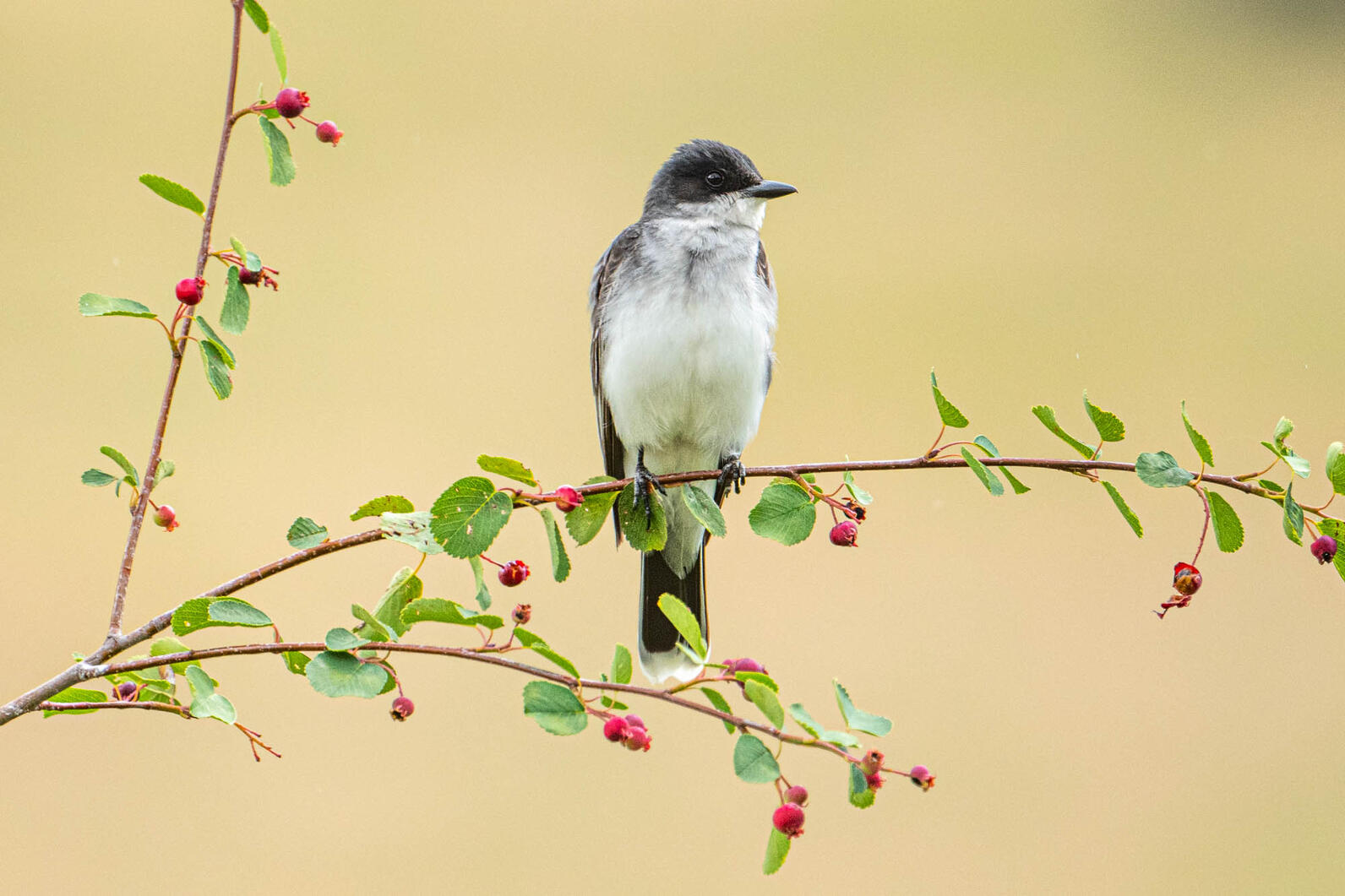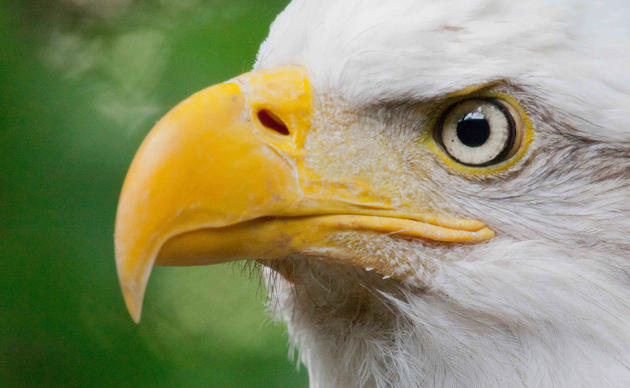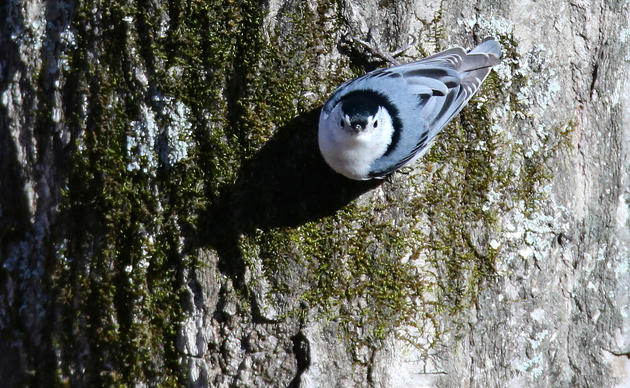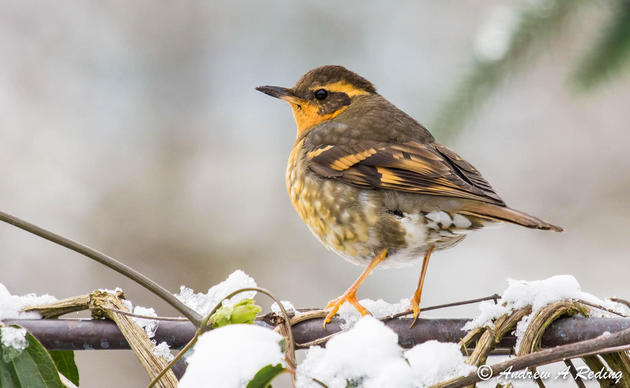“Dzeer” came from over the marsh. It was high in pitch and buzzy in nature. Twice, the call filled the air, and then there was a pause before it appeared more toward my left. I scanned the air above the cattails along Mary Anne Creek. My binoculars were held just below my eyes in the ready mode. There it was, maybe ten feet above the vegetation, making a loop out from a dead snag, an Eastern Kingbird.
This flycatcher breeds across eastern North America and west into Oregon and Washington and then north through much of Canada. Incredibly, they fly to South America for the winter and spend those months in the western part of the Amazon Basin, some going down as far as northern Argentina. I’d come to Washington’s Okanogan Highlands in hopes of finding a few, and by mid-June, they should be in the middle of their nesting.
She looked elegant sitting back on that snag, bigger than many passerines, but still, she weighs only 40 grams, the equivalent of three tablespoons of butter. Her black and white body glimmered in the sunlight, and I tried to comprehend her journey of the last several months. I didn’t actually know the sex of this individual, but her elegance gave that impression. If she’d wintered in Northern Argentina, she’d have traveled over 6,000 miles to reach here, all on her own power. Perhaps, this small bird had flown north to the Yucatan Peninsula, then across the Gulf in one flight, to Texas or Louisiana, and then moved up to here. To think, she probably fueled that trip on flying insects and fruit!
She suddenly shot up, flying rapidly toward a crow that was cruising across the valley. She began to chase that black bird, diving on its back repeatedly. Kingbirds are highly aggressive and will attack crows, hawks, and ravens that dare enter their territories. Their generic name, Tyrannus, means "tyrant." They will forcefully defend their nests and will try to dominate other birds.
However, in winter, these kingbirds travel in flocks, feeding on fruit, and apparently, they migrate in flocks, too. So different from the tenacious, feisty things here in the summer. Right now, I suspect that anything that moved might be attacked. But in winter, apparently, they seem more like a roving band of sorority and fraternity friends; smoking cigars, drinking margaritas or gin and tonics, and looking for fruity hors d’oeuvres. It would be fun to see that communal behavior.

I’d first seen this species when I was in high school. In the late 1960s, several buddies and I had gone on a weekend to northwestern Pennsylvania. Its elegant black head and back with that white underbelly really stood out, but the white tip to its tail left a mark in my mind. It was as if the bird was dressed in a tuxedo, and his tail had an extra accent. I hadn’t expected to find one on my first trip to the Okanogan a few years ago. It was a fun surprise that brought back fond memories of spring and summer birding trips when I lived in the east.
On this trip, I’d seen Eastern Kingbirds around Forde and Connors Lakes in the Sinlahekin Valley and now here in the Okanogan Highlands. Each time their classiness would grab my attention, and I'd stand watching them. They form monogamous pairs, and both members must work together to raise the young. If they both survive the winter, they will likely meet and become a couple again. Ornithologists, though, have discovered that many nests have at least one young fathered by a different male. Pairs only raise one brood per year. The fledglings are fed for up to five weeks after they leave the nest. Catching insects on the wing is demanding and requires a great deal of skill. These parents put that time into their young. Cold, wet weather will decrease flying insects and make it difficult for parents to provide for hungry young. It made me think of my daughter, who now lives in Australia. Had I done enough?
Both members of this pair sat on branches in the same bush. My brain seemed to understand the science of this species’ natural history, but my heart, my soul, saw so much mystery. Here was a small bird that flies between continents, changes personalities, and survives despite the distances traveled, weather, predators, and who knows what else. How remarkable, almost incomprehensible. These little tyrants took off along Mary Anne Creek, making a loop out over the water and then headed down across the marsh, disappearing out of my sight. To me, their flight seemed like a ballet as they twisted and turned in precise movements to pursue their flying morsels. They left me, though, with a treasure, a sense of primal awe.




